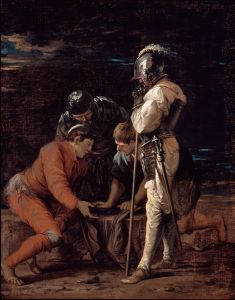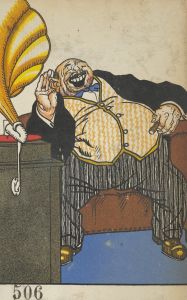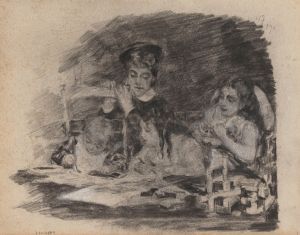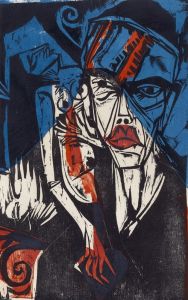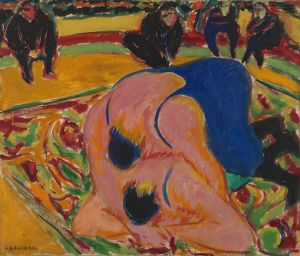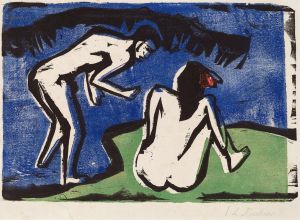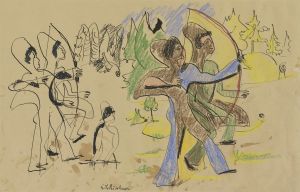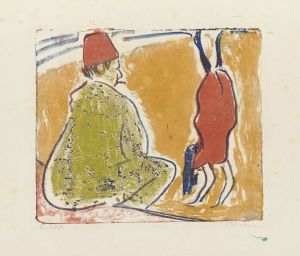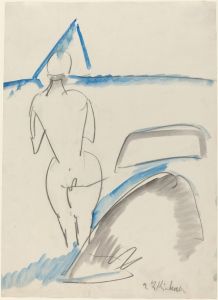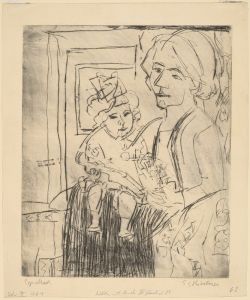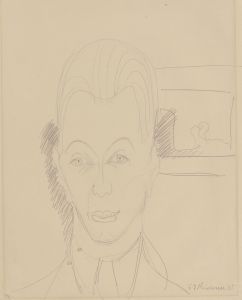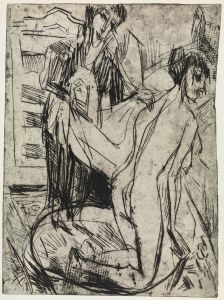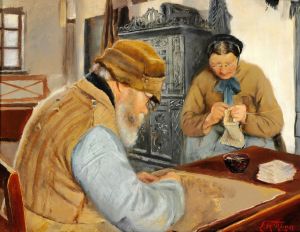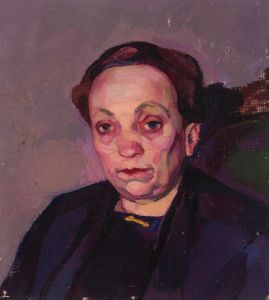
The Life
A hand-painted replica of Ernst Ludwig Kirchner’s masterpiece The Life, meticulously crafted by professional artists to capture the true essence of the original. Each piece is created with museum-quality canvas and rare mineral pigments, carefully painted by experienced artists with delicate brushstrokes and rich, layered colors to perfectly recreate the texture of the original artwork. Unlike machine-printed reproductions, this hand-painted version brings the painting to life, infused with the artist’s emotions and skill in every stroke. Whether for personal collection or home decoration, it instantly elevates the artistic atmosphere of any space.
"The Life" is a painting by the German Expressionist artist Ernst Ludwig Kirchner. Kirchner, born on May 6, 1880, in Aschaffenburg, Germany, was a founding member of the artist group Die Brücke (The Bridge), which played a pivotal role in the development of Expressionism in the early 20th century. His work is characterized by bold colors, dynamic compositions, and a focus on the human figure, often exploring themes of modern life and psychological depth.
"The Life" was created during a period when Kirchner was deeply involved with Die Brücke, which was founded in 1905 in Dresden. The group sought to create a new artistic language that broke away from traditional academic styles, emphasizing emotional experience and the expression of inner turmoil. Kirchner's work from this period often reflects the influence of non-Western art, particularly African and Oceanic art, which he and his contemporaries admired for its perceived authenticity and emotional directness.
In "The Life," Kirchner employs his signature style, characterized by angular forms, vivid colors, and a sense of movement. The painting depicts a scene of urban life, a common subject in Kirchner's oeuvre, reflecting his fascination with the rapid changes and the vibrant, often chaotic energy of modern cities. His figures are elongated and stylized, conveying a sense of tension and psychological complexity. The use of color is particularly striking, with bold contrasts that heighten the emotional impact of the scene.
Kirchner's work was heavily influenced by his experiences in Berlin, where he moved in 1911. The city's dynamic atmosphere and its burgeoning modernity provided rich material for his artistic explorations. "The Life" captures the essence of this period, illustrating the artist's keen observation of contemporary society and his ability to convey its underlying anxieties and excitements.
Throughout his career, Kirchner faced numerous personal and professional challenges. His mental health deteriorated during World War I, leading to a nervous breakdown in 1915. Despite these struggles, he continued to produce significant works, though his style evolved, becoming more abstract and introspective. In the 1920s, Kirchner moved to Switzerland, seeking solace in the tranquility of the Swiss Alps. His later works reflect a shift towards more serene and contemplative themes, though they retain the expressive power that defines his earlier pieces.
"The Life" remains an important example of Kirchner's contribution to Expressionism and his ability to capture the spirit of his time. His work has been celebrated for its innovative approach and its profound impact on the development of modern art. Kirchner's legacy continues to be honored in major art institutions worldwide, and his paintings are held in numerous prestigious collections.
Ernst Ludwig Kirchner's life came to a tragic end on June 15, 1938, when he took his own life. Despite his struggles, his artistic achievements have left an indelible mark on the history of art, and "The Life" stands as a testament to his extraordinary vision and talent.





